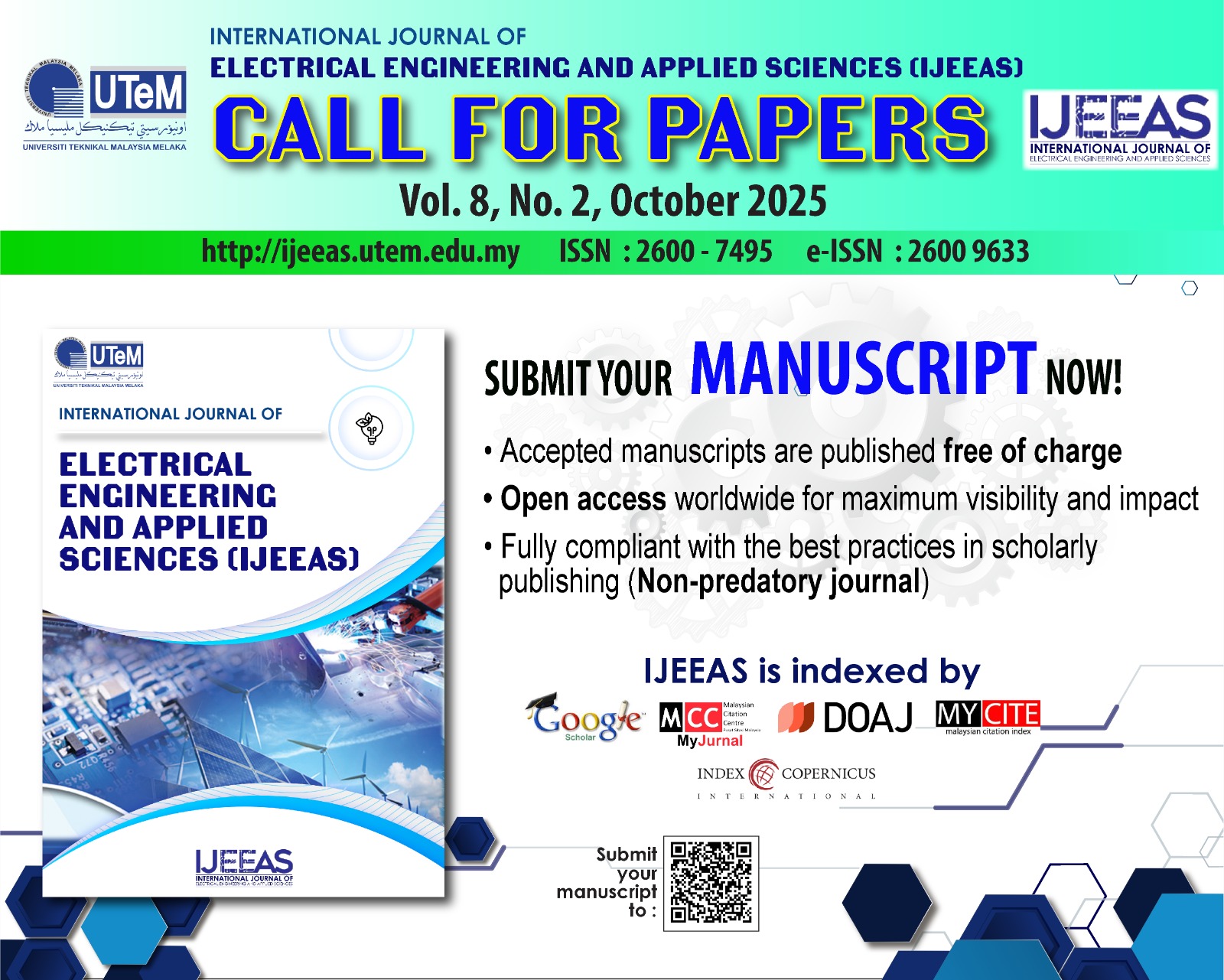Effects of Zn Doped TiO2 on the Performance of Perovskite Solar Cells
DOI:
https://doi.org/10.54554/ijeeas.2024.7.01.007Abstract
The work focuses on the effects of Zn-doped TiO2 as the Electron Transport Layer in MAPbI3 based Perovskite Solar Cells with a carbon-based back electrode fabricated under controlled ambient conditions. Varying molar percentages of Zn-doped TiO2 of 0, 0.5, 1, 2, and 5 mol% were successfully incorporated into the TiO2 crystal structure using the sol-gel technique. Characterization through X-ray diffraction and Energy Dispersive X-ray spectroscopy confirmed the incorporation of Zn ions. The crystallite size ranged from 19.99 to 7.1 nm, depending on the Zn ion doping concentration. Fourier Transform Infrared spectroscopy verified the presence of the anatase phase of Zn-doped TiO2 at wavenumber 438 cm-1. Scanning Electron Microscope images exhibited fairly smooth and uniform surface coverage for the Zn-doped TiO2 layers. The Rq values for surface roughness showed a decrease from 26.85 nm for undoped TiO2 to 23.4 nm for the 5 mol% Zn-doped TiO2 layer. UV-Vis spectroscopy demonstrated low light transmission loss characteristics from 300 to 790 nm, with the 2 mol% Zn-doped TiO2 showing slightly improved light transmission between 550 and 800 nm. The bandgap energy of undoped and Zn-doped TiO2 ranged from 3.53 to 3.38 eV. An optimum power conversion efficiency of 5.67% was achieved with a 2 mol% dopant concentration. However, increasing the Zn dopant to 5 mol% led to a slight deterioration in the PCE. According to the optimized ETL processing for the PSC, the Jsc increased from 12.2185 mA/cm2 to 12.25594 mA/cm2, the Voc increased slightly from 0.90569 V to 0.9231 V, and the PCE from 5.199% to 5.67%.
Downloads
Downloads
Published
How to Cite
Issue
Section
License
Authors who publish with this journal agree to the following terms:
- Authors retain copyright and grant the journal right of first publication with the work simultaneously licensed under a Creative Commons Attribution License that allows others to share the work with an acknowledgement of the work's authorship and initial publication in this journal.
- Authors are able to enter into separate, additional contractual arrangements for the non-exclusive distribution of the journal's published version of the work (e.g., post it to an institutional repository or publish it in a book), with an acknowledgement of its initial publication in this journal.
- Authors are permitted and encouraged to post their work online (e.g., in institutional repositories or on their website) prior to and during the submission process, as it can lead to productive exchanges, as well as earlier and greater citation of published work (See The Effect of Open Access).







